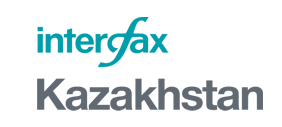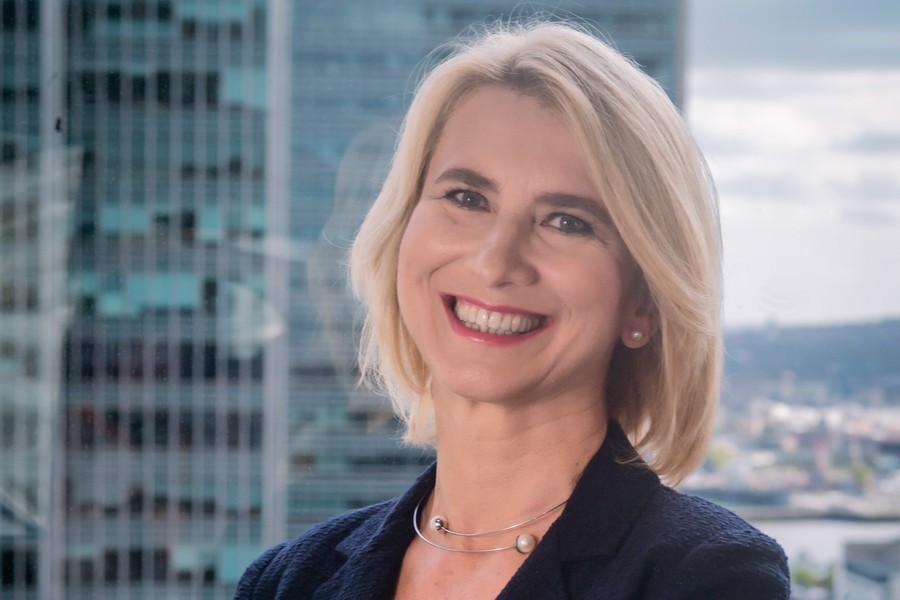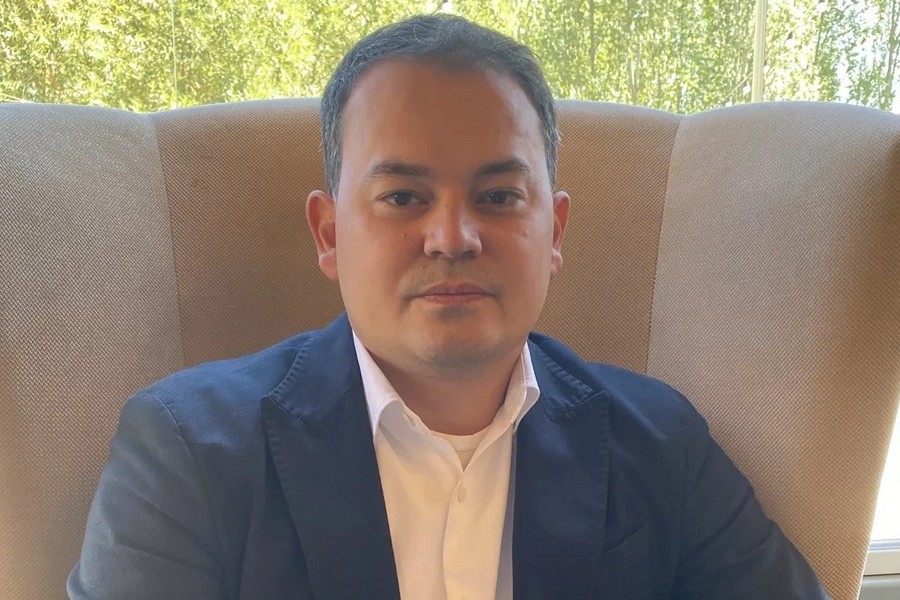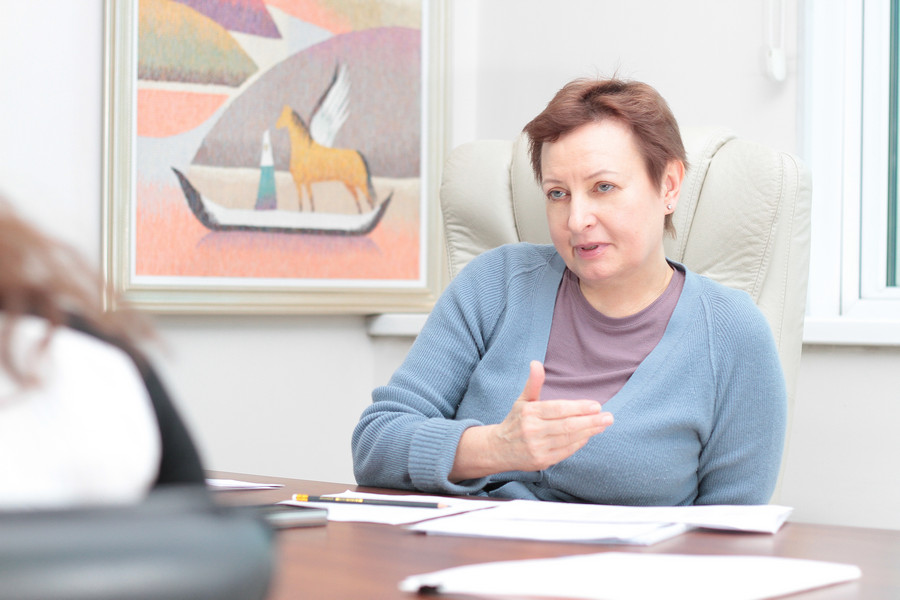Chairperson of the Board of JSC Unified Accumulative Pension Fund Nurbubi NAURYZBAYEVA:
THE ACCUMULATIVE PART WILL PREVAIL IN THE OVERALL PENSION PAYMENT BY 2030
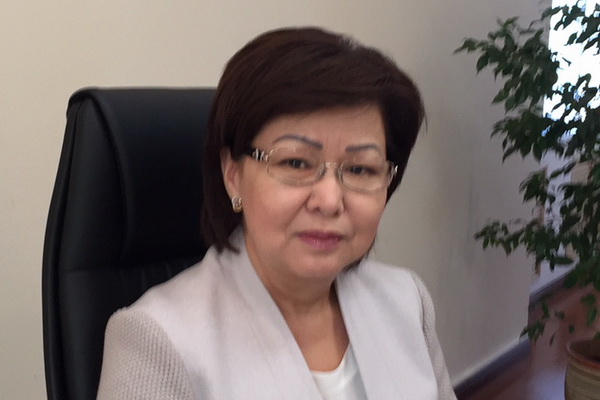
The Unified Accumulative Pension Fund (UAPF) plans to hand over assets under management of private companies. Chairperson of the UAPF Board Nurbubi NAURYZBAYEVA spoke in an interview with Interfax-Kazakhstan what requirements will be put on them, about the safekeeping and profitability of pension assets, as well as about the forthcoming changes in the system.
- When are the UAPF assets going to be transferred under management of private companies? By what criteria will these private companies be selected?
- Proposals to transfer part of pension assets under management into a competitive environment were worked out by the National Bank on behalf of the head of state. Now they are being discussed with the financial sector, including on the platform of the Association of Financiers of Kazakhstan.
Currently the principles of the functioning of the pension asset management companies (PAMC) are being discussed, what requirements should be put them: whether they would be separate companies, whether individual licenses would be issued to PAMCs or their activities could be combined with other investment activities. One of the key issues is the requirements for PAMC equity, given the significance of pension savings and the need for their maximum safekeeping the requirements will be tough.
- Given your experience in the financial sector, would you put any requirements on PAMC?
- This should be tough requirements for equity of these companies so that in the event of unforeseen situations concerning profitability the company could ensure the safekeeping of pension assets given increments in the course of management of these assets. In addition, there should be an effective, risk-oriented regulation of PAMC activities. The regulator is likely to be the National Bank of Kazakhstan. Prudential standards should be established that would determine the ratio of assets to be transferred under management and their equity, and requirements for rating the tools which they will invest in.
There must also be a certain limit policy - the placement of assets obtained by PAMC in various tools, given PAMC equity, investment declaration, investment policy conservativeness or aggressiveness. I consider that their policy should be moderately conservative.
- Was it different before?
- UAPF received a portfolio of pension assets from accumulative pension funds and currently there are various tools: shares, bonds, deposits. There are shares of companies that I do not understand why they were purchased. These are companies from various, sometimes not so promising, sectors. Therefore, negative experiences should be taken into account in new management. We will participate in this discussion, I believe. But the National Bank will select these companies.
Thus, the task of UAPF is mainly technical. We will explain information on PAMC to the general population, we will be in charge of the transfer of these savings, accounting, revenue accruals, transfers between PAMCs, and mutual settlements of rendered services.
- If regulation is tough, will there be a demand for PAMC to manage assets, should there be some kind of balance?
- There will be balance, I think. I simply proceed from the safekeeping of pension savings. An acceptable level of risk in order to ensure the maximum safekeeping of pension assets is the main criterion because pension savings are future citizens' pensions and, naturally, the main objective is to preserve them. Moreover, there is the state guarantee of the pension assets safekeeping. You know that by the relevant law the state guarantees the safekeeping of pension savings given the inflation rate. The difference [between inflation] is always paid from the budget. That is, from this position: the income should be at an acceptable level, but the risk should be low.
- Is the share of financial tools purchased at the expense of UAPF pension assets denominated in US dollars only, except for tenge,? What is the size of this share now? How has it changed recently?
- The share of securities denominated in US dollars as at October 1 was 28.28% compared to 22.34% as at January 1, 2017. It has increased by 42.98% since the beginning of the year.
The investment portfolio of UAPF pension assets made up 71.12% of tenge, 28.28% of US dollars, 0.49% of Russian rubles and 0.11% of other currencies as at October 1.
- Has the share of second tier banks in the investment portfolio of the fund changed since then? How?
- Pension assets invested in financial tools of second tier banks decreased by 235.48 billion tenge as of October 1, 2017 or their share decreased by 6.38% compared to the beginning of the year.
- The IMF mission did not recommend that UAPF deposit with weak banks. How does the found implement the recommendation?
- Now the National Bank deposits pension assets only with leading foreign banks with high financial stability and credit ratings of at least "A" and, correspondingly, with a low risk level, such as Bank of Montreal, Bank of Tokyo-Mitsubishi, Credit Agricole, ING Bank NV, Mizuho Corporate Bank, Natixis Capital Markets. The investments in these banks has totaled 479.02 billion tenge (333.53 tenge/$1) since the beginning of 2017.
- Are the assets of the International Bank of Azerbaijan (IBA bonds worth $ 250 million, bought back in autumn 2014) included in UAPF problem assets? What is their share in the assets of the fund?
- Currently the International Bank of Azerbaijan's bonds are absent from the portfolio of UAPF pension assets. The process of voluntary restructuring of the IBA's external obligations ended on September 1, 2017, when the existing portfolio of IBA's pension assets was exchanged for government securities (GS) of the Republic of Azerbaijan in the ratio of 1 to 1 at face value.
At the same time, according to Bloomberg, to date, indicative quotes for the purchase of government securities are within a band of 86% - 87% of face value with little demand for these bonds.
In general, this investment volume of UAPF pension assets in Azerbaijan is significant, and the National Bank intends to reduce it.
In September this year, Azerbaijan’s government securities were put on the market. As a result of low demand, their sale was impossible at the average market price.
According to J.P. Morgan, these Azerbaijan’s government securities were entered in the EMBI Global index (Emerging Markets Bond Global Index), calculated on the basis of the emerging markets securities including 147 issuers from 67 countries. This move may have a positively impact on liquidity and demand by investors for Azerbaijan’s government securities.
Currently, the market situation is being monitored and the possibility of selling the received securities on the market is being considered.
- The yield from savings is of interest to depositors almost as well as the safekeeping. What yield do you expect approximately this year?
- Given that the market conditions change quickly, the exchange rates change daily, all this affects the cost of financial tools. Changes in the external market - and we have about 30% of foreign exchange assets - also affect. At least, the National Bank strives to obtain maximum profitability with acceptable risk. But on the whole, we expect the yield to be not lower than inflation.
- What yield on depositors’ accounts was like in September? Is it possible to determine what yield will be in the 3rd quarter?
- The yield from UAPF pension assets since the beginning of the year as of October 1, 2017 was 6.68% with the inflation rate of 4.2% for the same period The net investment yield has amounted to 462.2 billion tenge since the beginning of the year.
- How is the fund solving the objective of achieving the yield above inflation in order to ensure the full safekeeping of depositors’ funds?
- Through the optimal combination of types of financial tools while observing investment limits. As at September 1, 2017, more than 70.75% of pension assets were invested in reliable financial tools with ratings from “AAA” to “BBB”. These are securities of the US government, National Wealth Fund Samruk-Kazyna, IBM Corporation, a subsidiary bank of Sberbank of Russia, China Mobile Ltd, Bank of America Corp, Commerzbank AG, Goldman Sachs, ING Bank NV, Mizuho Corporate Bank, Kazakhstan’s Finance Ministry, Halyk Savings Bank of Kazakhstan, Kazakhtelecom and others.
The state guarantees recipients the safekeeping of the amount of actually made compulsory pension and professional contributions to UAPF given the inflation rate at the time of obtaining the pension payments entitlement. That is, when a person retires, the yield on his/her individual pension account is calculated proportionally to the inflation rate over the period a recipient stayed in the accumulative pension system.
- What changes will occur in the pension system in the future?
- Gradually the solidarity component decreases and the accumulative component share increases. People who do not have 6 months of employment period as at January 1, 1998, those who are now 35-40 years old, will not receive the so-called work pensions from the solidarity system. Of course, in this case it is necessary to take into consideration that they retain the right to a minimum guaranteed pension provision (this is the current basic pension). However, basic pensions from July 1 next year will be calculated on the basis of the period of participation in the pension system. By 2030, the accumulative part will prevail in the total pension payments.
Therefore, if people do not make savings now, then the size of their future pensions will be small. Many do not know this - this is our mentality, we are used to the fact that the state pays a pension. There is a calculator on our website enpf.kz with which one can count a future pension. Maybe, this would prompt them to make deductions from the full amount, because there is no secret that many make deductions from minimum wages, especially this concerns small and medium-sized businesses. Today it may profitable for a person as s/he believes, but in the future this will be his/her pension.
We are now looking into the aspect regarding the development of corporate pension plans, we want to involve employers in these issues. In Aktobe region, for example, there are several large companies that transfer compulsory professional contributions as prescribed by law - 5% for their staff working in hazardous conditions, as well as transfer voluntary contributions for their employees. I think that there are a lot of such companies in Kazakhstan, not only large ones, but also medium-sized, and small ones, who could make such contributions. This is an additional moral and material incentive for an employee.
- Are you planning to introduce monthly pension payments? Does this mean that savings of Kazakhstan’s retirees have become so large that it is impossible to pay out them once? What are the current biggest and smallest amounts of depositors’ savings? What is the average amount of savings?
- Changes in the pension payments procedures to be in effect from 2018 were put in the Law on Pension Provision in the Republic of Kazakhstan as early as in 2015. The payment rules have been approved by a government decree. From January 1, 2018, pension payments will be monthly. If the amount of pension savings does not exceed the minimum pension established by the Law on the Government Budget for the corresponding fiscal year twelvefold then the amount will be paid out in a lump sum.
This norm is introduced in order to increase the efficiency of the pension system, including the increase in the amount of combined pension payments from budget funds and from a funded pension.
For the time being it is not possible to consider the amount of savings sufficient. As at October 1, 2017, average savings in compulsory contributions accounts neared 800,000 tenge. And the life expectancy in Kazakhstan is on the rise. This amount will be enough for several years of retirement.
The main reason for small average amounts of savings is that not all working individuals in the country regularly transfer contributions to their accounts in the accumulative pension system. In 2016, of 9.6 million compulsory contributions accounts 8.6 million accounts were for depositors, not for recipients, pension contributions were made regularly only to 5.8 million accounts in the fund database. If we consider the periodicity and frequency of individuals’ contributions, then the average frequency of contributions to individual pension accounts was 8 in 2016.
- And what will the current amount of the minimum guaranteed pension - the so-called basic pension - be?
- Currently basic pensions are paid to everyone in the amount of 14,466 tenge (slightly more than half of the subsistence minimum). From July 1, 2018, those who have less than 10 years of participation in the accumulative pension system will get 54% of the subsistence minimum established for the corresponding year. And another 2% will be added for each year of employment-based participation. That is, with 33 year-length of employment it would be possible to get the maximum amount of the basic pension - 100% of subsistence minimum.
- Through which banks is it possible to receive payments from UAPF?
- UAPF transfers pension payments to a recipient’s bank account specified in a pension payment application. Most accounts open in Halyk Bank of Kazakhstan (60%), Kazkommertsbank (12%) and JSC Kazpost (6%).
Banking commissions related to transfers, crediting and pay-outs of pension savings, except for conversion and transfer to bank accounts in foreign banks, are paid at the expense of UAPF's own funds.
- Kazakhstan is not part of the Global Retirement Index in this year's ratings, which included 43 countries. Russia took 40th position. How would you rate our country for retirees?
- The Global Retirement Index includes countries with developed economies according to the IMF, OECD member states and BRICS states (Brazil, Russia, India and China).
The current reform of Kazakhstan’s pension system in accordance with the concept of further modernization of the country’s pension system until 2030, as well as the instructions of the head of state, is aimed at ensuring adequate retirement benefits for decent living standards at retirement age.
The current model of Kazakhstan’s pension system in is multi-component and balanced, based on the optimal division of responsibility for pensions between the state, employers and employees. The government plans to strengthen the accumulative pension system, supplementing it with a new funded component, formed from compulsory pension contributions by an employer, which will be made in favour of all employees in the amount of 5% of their income.
All undertaken measures are designed to increase the overall pension rate replacing the labor income scheme and boost the standard of living of pensioners.
In addition, Kazakhstan’s accumulative system is characterized by the fact that we have the unique system of state guarantees of the safekeeping of pension savings.
This guarantee is not available in other countries. For example, in the Czech Republic, Japan and Slovakia, management companies guarantee the safekeeping of only the face value of contributions or zero investment yield without taking inflation into account. In Germany, pension funds guarantee only a rate of 2.25% with regard to contributions made until retirement age. The pension assets managers in Chile ensure the safekeeping depending on the type of a chosen fund, but no less than 2% of the weighted average real yield during the previous 36 months. In countries such as Sweden, Australia, Israel, Norway, Mexico, Estonia there is no guarantee of safekeeping at all.
In Kazakhstan, if the yield from pension savings over the entire period of staying in the [pension] system is below the inflation rate, the state compensates for this difference. This indicates that the depositors’ savings are reliably protected.
- Thank you for the interview!
October, 2017
© 2025 Interfax-Kazakhstan news agency
Copying and use of these materials without reference to the source is prohibited
Archive
